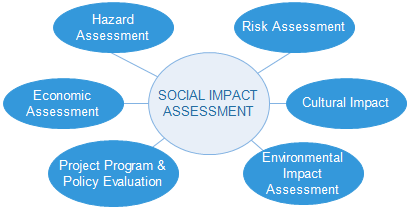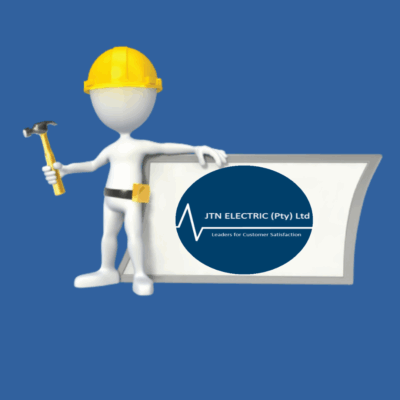
Ultimately when I was chosen for this topic, my first thought when hearing “Environmental Impact Assessments” (EIA’s) was little butterflies, tree huggers and strange frogs of which there are only 2 left. But there most certainly is a lot more to it!
First things first… what exactly is an EIA? Very simple really, thanks to my bestie, Google: “Environmental Impact Assessment (EIA) is a process of evaluating the likely environmental impacts of a proposed project or development, taking into account inter-related socio-economic, cultural and human-health impacts, both beneficial and adverse.”
Still not sure? Let’s get to it then!
EIA in South Africa all started back in the ’70’s. It started out voluntarily until 1997 when the government passed EIA regulations under the old Environmental Conservation Act (Act 73 of 1989). Activities, such as projects, policies, programmes and plans, which have a significant effect on the environment must be investigated and assessed, to bring any valuable concerns to light. This does not, however, mean that the project won’t move forward, the EIA test is to gain clarity so that developers/clients are made aware of any impacts the project will have on the environment or culture upon completion.
There are two levels of assessment, namely: a Basic Assessment process and a full EIA. The full EIA process entails the following steps:
1. Screening
2. Scoping
3. Assessment study
4. Review
5. Decision-making
6. Follow-up
The length of the EIA will depend on the project under review. The process usually lasts between 6 and 18 months, approximately the same length as the feasibility study. Now, let’s have a look at each step individually and what each step of the process entails.
Screening:
This process is completed by the relevant authority at national, provincial or local level. As previously mentioned, there are two levels of assessment. Basic assessments are done to streamline the EIA so that smaller projects/activities (ie. road widening, construction of dams below 5m in height etc) are not subjected to a full EIA. These assessments, therefore, do not include a scoping phase. An Environmental Assessment Practitioner (EAP) is required to determine whether a basic assessment or full EIA is required. The EAP will consult with the public, designated competent authority and relevant stakeholders. The input by the stakeholders is required before submitting the screening report for screening decisions by the DEA. A full EIA is needed for projects that will have an effect on a national protected area. In these instances, the Minister is designated as the competent authority. The estimated time frame for the screening process is 30 days.
Scoping:
Scoping is the process of identifying the key environmental issues and is the most important step within an EIA report. Scoping is important for two reasons: a.) so problems can be pinpointed early allowing mitigating design changes to be made and b.) to ensure that detailed prediction work is only carried out for important issues. Scoping is only required for projects that undergo a full EIA. An approved EAP may be appointed at this stage. After the application is submitted, the proponent must:
- Conduct the public participation process;
- Give notice in writing of proposed application to any state agency with jurisdiction over the proposed activity;
- Open and maintain a register for public participation;
- Consider all objections and representations received from interested and affected parties;
- Identify relevant issues, potential environmental impacts, alternatives of the project activity;
- Prepare a scoping report which must be reviewed and commented on by all concerned parties;
- Give interested and affected parties an opportunity to comment on the scoping report;
- Submit the scoping report to the competent authority for review and decision-making.
Once all documents are submitted, the competent authority makes the decision on whether the report has been approved, rejected, or if amendments should be made. Scoping is done to identify key interest groups, both government and non-governmental. Individuals who are affected by the project need to hear about it as soon as possible. The estimated time frame for the scoping process is 30 days.
Assessment and reporting:
Once the scoping report has been accepted, the EAP will begin with the approved plan of study for the EIA. The applicant or EAP may appoint an expert to carry out a special study or a specialised process. The contents of an EIA report include the details of the appointed EAP, the description and location of the project, a description of the environment that may be affected, details of the public participation process, description of the needs of the project, description of the potential alternatives to the project and their analysis along with the indication of the adopted methodology, a summary of the findings and recommendations of any specialist report, all environmental issues identified with significant impacts, assumptions, uncertainties and gaps in knowledge. Reasoning as to whether the project should or should not be authorised, a draft EMP and copies of any specialist reports and any specific information that may be required by the competent authority. For projects that require a Basic Assessment, a Basic Assessment Report (BAR) is required.
Review:
The competent authority and other relevant authorities are responsible for the review, they can either accept the EIA report or refer it for specialised review by a team for their comments, this is usually the case where technical knowledge or a high level of objectivity is required. The time frame for the reviewing report is 60 days. For a Basic Assessment Report, the competent authority has 30 days to accept, reject, suggest alternatives, or to subject the report to a full EIA.
Decision-making:
After the EIA report is approved, a decision is taken on whether an environmental authorisation is granted for the activity. This is required before any activities can begin by the developer. The granting of an environmental authorization does not necessarily lead to project approval. Other licences separate from the one issued by DEA have to be received from other relevant authorities before proposed project activities can commence. The competent authority taking the decision on whether the environmental authorisation is granted or not can be the Minister of Environmental Affairs, Members of the Executive Council (MEC), the Minister of Mineral Resources for mining related activities, the provincial, or local environmental authorities with delegated powers. All decisions need to be made public. The competent authority must grant or refuse the environmental authorisation within 45 days. For Basic Assessments, the decision will be taken within 30 days from the approval of the BAR.
Monitoring, Compliance and Enforcement:

Compliance monitoring
Monitoring is a mandatory requirement. The applicant is required to submit an Environmental Management Plan as part of the EIA study report. This should include the requirements for the management, monitoring and reporting of the impacts of the project on the environment throughout the life cycle of the project.
 Non-compliance penalties
Non-compliance penalties
The competent authority may suspend an Environmental Authorisation for several reasons, i.e. if there are reasonable grounds for believing that the contravention or non-compliance with a condition of the authorisation causes harm to the environment, or if it is necessary to prevent such harm. Furthermore, a person is guilty of an offence if that person provides misleading or incorrect information, fails to disclose information to the competent authority, fails to comply with a request to submit an environmental audit report, fails to comply with any conditions granted in an authorised exemption and continues with a project for which an Environmental Authorisation was suspended. The punishment for the offence could be imprisonment for a period not exceeding one year or to a fine prescribed not exceeding R1 million, or (and this is the scary part) to both a fine AND imprisonment.
Public participation:
Public participation is required for projects that require only a basic assessment and projects that require a full EIA. However, there are no provisions for public participation during the decision phase and during monitoring of EIA activities. The public is given an opportunity to comment on reports and statements. The public is also informed about decisions and their reasoning.
Legal recourse:
A person who wishes to appeal against a decision must submit a notice of intention with the Minister in charge of the environment, the MEC or a delegated organ of state to the appeal authority. An appeal panel can be appointed to support the processing of the appeal. Recommendations are submitted to the competent authority in writing. The relevant authorities can then make a decision to the appeal.
In conclusion, Environmental Impact Assessments cannot give a precise picture of the future, much like we as South Africans don’t have an exact idea of where these “interesting” changes will take us. Environmental Impact Assessments enable uncertainty to be managed and to assist in correct decision making within the project process. A useful management general truth is to preserve flexibility in the face of uncertainty.
Sources: http://www.fao.org/docrep/V8350E/v8350e06.htm
http://www.eia.nl/en/countries/af/south+africa/eia
https://www.soas.ac.uk/cedep-demos/000_P507_EA_K3736-Demo/unit1/page_14.htm
About Elaine Cockcroft
I started working at Leads 2 Business in January 2016 and form part of the sales team as Account Executive based in Gauteng.










Leave a Reply